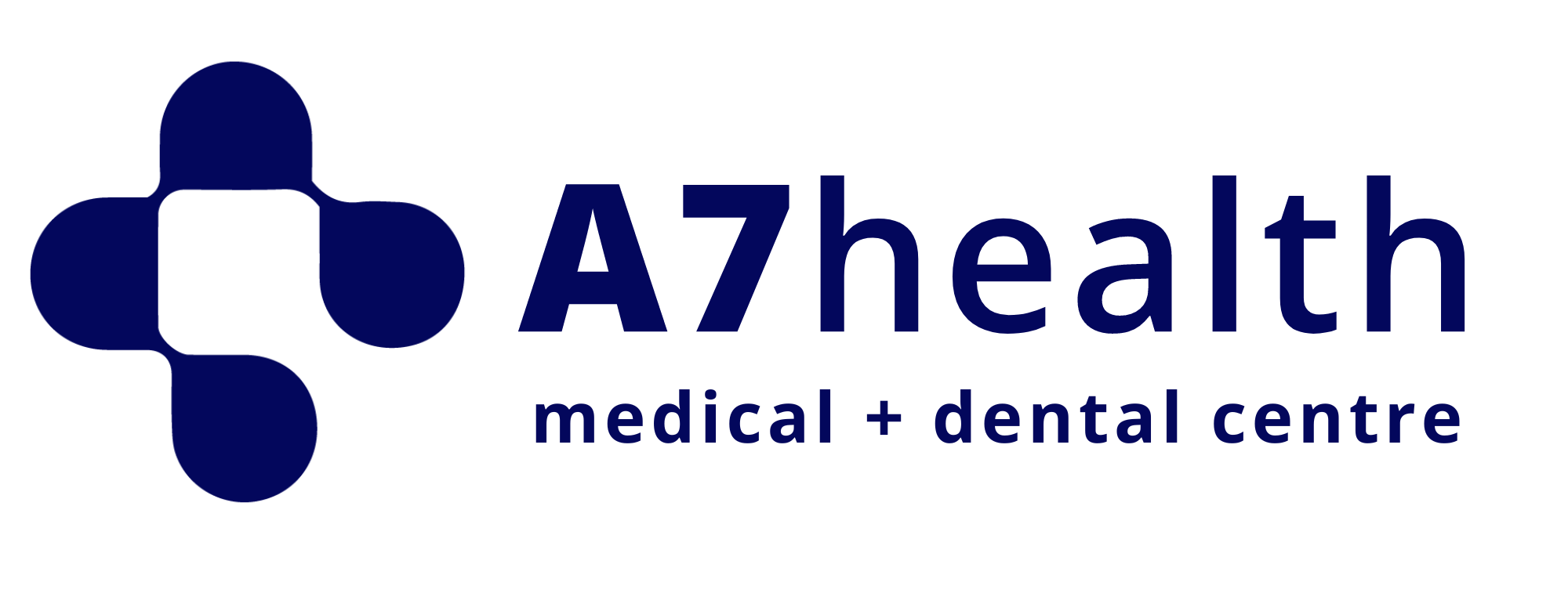Urinary Incontinence
Urinary incontinence – the loss of bladder control – is a common and often embarrassing problem. The severity ranges from occasionally leaking of urine when coughing or sneezing to an urge to urinate so sudden and strong that you cannot make it to the bathroom in time.
If you have pelvic floor weakness and are experiencing incontinence symptoms, schedule an appointment with an A7 Health Physiotherapist.
Symptoms of urinary incontinence
Many people experience occasional, minor leaks of urine. Others may lose small to moderate amounts of urine more frequently. Types of urinary incontinence include:

- Stress incontinence – Urine leaks when you exert pressure on your bladder by coughing, sneezing, laughing, exercising or lifting something heavy.
- Urge incontinence – You have a sudden, intense urge to urinate followed by an involuntary loss of urine. You may need to urinate often, including throughout the night. Urge incontinence may be caused by a minor condition, such as infection, or a more severe condition such as a neurological disorder or diabetes.
- Overflow incontinence – You experience frequent or constant dribbling of urine due to a bladder that doesn’t empty completely.
- Functional incontinence – A physical or mental impairment keeps you from making it to the toilet in time. For example, if you have severe arthritis, you may not be able to unbutton your pants quickly enough.
- Mixed incontinence – You experience more than one type of urinary incontinence — most often this refers to a combination of stress incontinence and urge incontinence.
Causes of urinary incontinence
Urinary incontinence can also be a persistent condition caused by underlying physical problems or changes, including:
- Pregnancy – Hormonal changes and the increased weight of the fetus can lead to stress incontinence.
- Childbirth – Vaginal delivery can weaken muscles needed for bladder control and damage bladder nerves and supportive tissue, leading to a dropped (prolapsed) pelvic floor. With prolapse, the bladder, uterus, rectum or small intestine can get pushed down from the usual position and protrude into the vagina. Such protrusions may be associated with incontinence.
- Changes with age – Aging of the bladder muscle can decrease the bladder’s capacity to store urine. Also, involuntary bladder contractions become more frequent as you get older.
- Menopause – After menopause, women produce less estrogen, a hormone that helps keep the lining of the bladder and urethra healthy. Deterioration of these tissues can aggravate incontinence.
- Enlarged prostate – Especially in older men, incontinence often stems from enlargement of the prostate gland, a condition known as benign prostatic hyperplasia.
- Prostate cancer – In men, stress incontinence or urge incontinence can be associated with untreated prostate cancer. But more often, incontinence is a side effect of treatments for prostate cancer.
- Obstruction – A tumor anywhere along your urinary tract can block the normal flow of urine, leading to overflow incontinence. Urinary stones — hard, stone-like masses that form in the bladder — sometimes cause urine leakage.
- Neurological disorders – Multiple sclerosis, Parkinson’s disease, a stroke, a brain tumor or a spinal injury can interfere with nerve signals involved in bladder control, causing urinary incontinence.
Treatment and prevention of urinary incontinence
Urinary incontinence is not always preventable. However, to help decrease your risk:
- Exercise – Move more, maintain a healthy weight and practice pelvic floor exercises. A Physiotherapist can assist with targeted exercises.
- Reduce constipation – Eat more fiber, which can prevent constipation, a cause of urinary incontinence
- Avoid bladder irritants – such as caffeine, alcohol and acidic foods
- Don’t smoke – or seek help to quit if you’re a smoker.
Treatment at A7 Health for Incontinence:
Get Physiotherapy – Book an appointment with a Physiotherapist at A7 Health who will assess you and treat your pelvic floor dysfunction. Some of the treatments include:
- Massage for pain relief.
- Relaxation and lengthening exercises for your abdominal and pelvic muscles.
- Strengthening exercises for your abdominal and pelvic muscles.
Join an exercise class (with a Biokineticist) – Moderate exercise, such as walking, has been shown to help relieve pain during pregnancy. Stretching can help relieve sore muscles. Join an exercise class led by an A7 Health Biokineticist who will teach you exercises that will strengthen and relax muscles and help make childbirth delivery easier. These exercises will also help you with recovery after you give birth.
